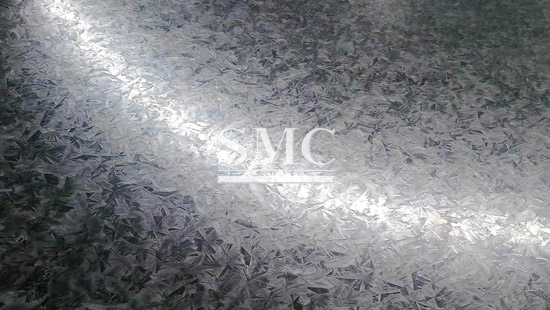Generally, zinc-coated steels that require heavy anti-corrosion coating are mainly hot-dip galvanized steel and thermal sprayed zinc steel. How is the coating system and surface treatment on this substrate different from bare steel?
Zinc is a lively metal. The purpose of applying zinc coating is to provide cathodic protection and antirust function for steel. This function is the same as zinc-rich primer.
Compared with bare steel, the surface coated with zinc metal has the following differences:
1. Whether it is hot-dip galvanized steel or thermal sprayed zinc steel, the surface is usually smooth, and it is impossible to spray clean up like bare steel to achieve a certain degree of roughness;
2. The active zinc surface will produce zinc salts after being exposed for a period of time;
3. Active zinc is easily saponified with fatty acids in some oil-based paints (such as alkyd, phenolic, etc.) or some active ingredients in other paints;
4. Since the zinc metal coating has been provided to provide protection, the protective coating coating system after coating can be correspondingly thinned.
Therefore, compared with the bare steel, the primer for the surface of zinc metal coating has special requirements:
1. Inert to zinc, no adverse reactions can occur;
2. Strong adhesion to smooth zinc surface.

In the ISO12944-4 standard, hot-dip galvanized steel and thermal sprayed zinc steel have been described before the surface treatment, mainly to remove zinc salts and pollutants. “ASTMD2092-2001 Surface Treatment of Galvanized Steel for Painting” is also introduced.
In the ISO12944-5 standard, for different corrosiveness levels and durability requirements, protective coating systems for hot-dip galvanized steel and thermal sprayed zinc steel are recommended,.
On the market, the most commonly recommended primers for hot-dip galvanized steel and thermal sprayed zinc steel surface are the following two types:
1. Ethylene phosphating primer, also known as etching primer, washing primer, etc., is a special paint containing phosphoric acid. The thin film (8-15 microns) formed by the phosphating primer is firmly attached to the metal surface, The role of phosphating and passivation.
Phosphating primers contain zinc, chrome yellow, and high lead content. They are rarely used at present. They are usually used only when durability is not high. They are coated with alkyd, phenolic, epoxy ester and other low-grade paints.
2. Epoxy universal primer. Some manufacturers are also called epoxy multifunctional primers, which are primers designed for smooth non-ferrous metal surfaces (including galvanized surfaces). The adhesion of the paint is strengthened to ensure its adhesion strength. This category is currently mainstream in the market.
Guest contributors are welcome at the Alloy Wiki.It is a weekly wiki and guide on alloy information and processing technology, while also about the vast array of opportunities that are present in manufacturing. Our team of writers consists of a Machining Material Supplier / Machinist / Tool and Die Maker, a Biomedical Engineer / Product Development Engineer, a Job Development Coordinator / Adjunct Professor, and a President and CEO of a manufacturing facility.
Link to this article:How is Galvanized Steel Structure Surface Treated and Painted?
Reprint Statement: If there are no special instructions, all articles on this site are original. Please indicate the source for reprinting:Alloy Wiki,thanks!^^


